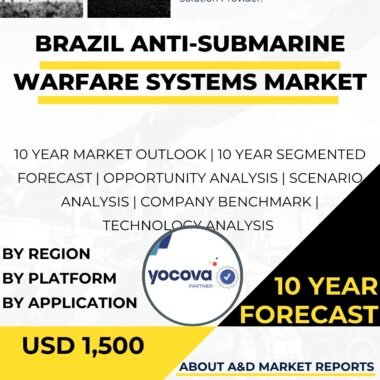Description
Australia Ship Radar Market Overview
The Ship Radar market in Australia plays a crucial role in maritime safety, security, and navigation. These systems provide essential capabilities for vessel detection, collision avoidance, weather monitoring, and search and rescue operations. Ship radar systems enable ships to identify other vessels, obstacles, and landmasses, ensuring safe navigation and preventing accidents at sea. This article provides an overview of the Australia Ship Radar market, including its significance, applications, key players, technologies, government initiatives, and future prospects.
Importance of the Ship Radar Market
The significance of the Ship Radar market in Australia lies in the nation’s extensive coastline, strong maritime trade, and strategic geographic location. Australian waters present many navigational challenges, including reefs, shallow areas, and unpredictable weather. Ship radar systems improve situational awareness, helping mariners identify hazards, monitor weather, and navigate safely through congested shipping routes.
Role in Maritime Safety and Security
Beyond navigation, ship radar technology is vital for Australia’s maritime defense and border protection. It helps detect unauthorized vessels and suspicious activities, contributing to the nation’s maritime security and sovereignty.
Types of Ship Radar Systems
The Australia Ship Radar market features several radar types designed for different vessel operations:
-
Navigational Radars: Provide real-time information about surroundings, including ships, buoys, and coastlines.
-
Surveillance Radars: Support maritime security and defense, monitoring vessel movements and identifying threats in the maritime domain.
Applications of Ship Radar in Australia
Ship radar systems are used across various sectors:
-
Commercial Shipping and Transport: Enhance navigation safety and collision avoidance in busy ports.
-
Fisheries: Help locate fish shoals, monitor activity, and ensure compliance with maritime regulations.
-
Defense and Law Enforcement: Strengthen maritime surveillance and early warning capabilities.
-
Search and Rescue Operations: Improve detection and coordination during maritime emergencies.
Key Market Participants
The Australia Ship Radar market is supported by domestic and international companies.
Domestic Companies
Firms such as Saab Australia and CEA Technologies design and manufacture radar systems tailored to Australia’s maritime needs. They collaborate with the Australian Defence Force (ADF) to deliver reliable radar solutions for naval operations.
International Companies
International radar manufacturers such as Raytheon, Thales Group, and Kelvin Hughes also operate in the Australian market. These companies provide advanced radar systems, components, and support services to the local maritime industry.
Technological Advancements in Ship Radar
Innovation drives the Australia Ship Radar market, with ongoing research focused on improving radar resolution, range, sensitivity, and integration.
-
Digital Signal Processing: Enhances detection accuracy and reduces interference.
-
Solid-State Radar Technology: Increases reliability and lifespan.
-
Multi-Mode and Phased-Array Systems: Allow vessels to switch between navigation and surveillance modes for better performance.
These developments help vessels operate more safely and efficiently in diverse maritime environments.
Future Growth and Market Outlook
The Australia Ship Radar market is expected to grow as maritime trade expands and defense modernization continues. Demand for advanced radar systems will rise to support safe navigation, maritime security, and border control.
Next-Generation Radar Systems
New radar technologies such as Active Electronically Scanned Array (AESA) radar will offer improved target tracking, better accuracy, and stronger resistance to electronic interference.
Network-centric radar systems will enable ships to share radar data in real time with other vessels and command centers, boosting maritime situational awareness.
Government Initiatives Supporting the Market
The Australian government actively promotes maritime safety and technology adoption. Programs under the National Plan for Maritime Environmental Emergencies strengthen response capabilities for maritime incidents and disasters, driving investment in advanced radar systems for search and rescue operations.
Civilian and Commercial Applications
In the civilian sector, ship radar systems continue to enhance safety and operational efficiency.
-
Fisheries Management: Support sustainable operations and resource monitoring.
-
Transport and Logistics: Improve route planning and reduce downtime.
-
Recreational Boating: Adoption of compact radar systems in smaller vessels like fishing boats and leisure craft is increasing.
Conclusion
The Australia Ship Radar market is vital for the country’s maritime safety, defense, and navigation. These systems enable collision avoidance, threat detection, and effective emergency response. Domestic and international companies continue to advance radar performance through innovation and partnerships.
Ongoing investment, research, and modernization will ensure that Australia’s Ship Radar capabilities remain strong. As maritime activity grows, ship radar systems will be essential to protect lives, secure borders, and sustain safe maritime operations across Australia’s vast coastal waters.




